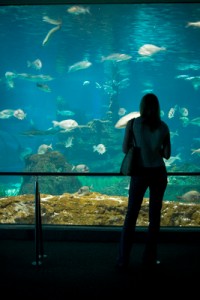Last year as part of microBEnet’s mandate to perform outreach associated with the microbiology of the built environment we sponsored and managed an undergraduate research project. In this we isolated organisms from the built environment and then sequenced several reference genomes. This work is currently being prepared in a series of genome announcement publications. (see previous blog post here, see the blog for the project here).
 This year we have a new crop of undergraduates who are going to be examining biogeography and succession of microbial communities in aquariums. You can follow the progress of this project here.
This year we have a new crop of undergraduates who are going to be examining biogeography and succession of microbial communities in aquariums. You can follow the progress of this project here.
I always thought an interesting project along related lines would be to study microbial succession in a simple ecosystem: cooling towers. These communities are usually characterized by low diversity (we think) due to the application of microbial control agents, but systems which are poorly treated (or not treated at all) can lead to complex biofilms containing multicellular microbes such as amoeba which can harbor Legionella sp. Perhaps characterizing development of these communities could lead to an early indicator of biofilms capable of harboring Legionella, signalling a need for elevated control efforts.
John,
I think that would be a great project. Not good for undergraduates though because getting approval to work with known human pathogens is a whole different mess of paperwork and training!
Question – do aquarium handlers develop and evolve immune responses to the microbial flora of their aquaria? I guess phlebotomy would be difficult to approve for an undergrad lab, but still an interesting question.